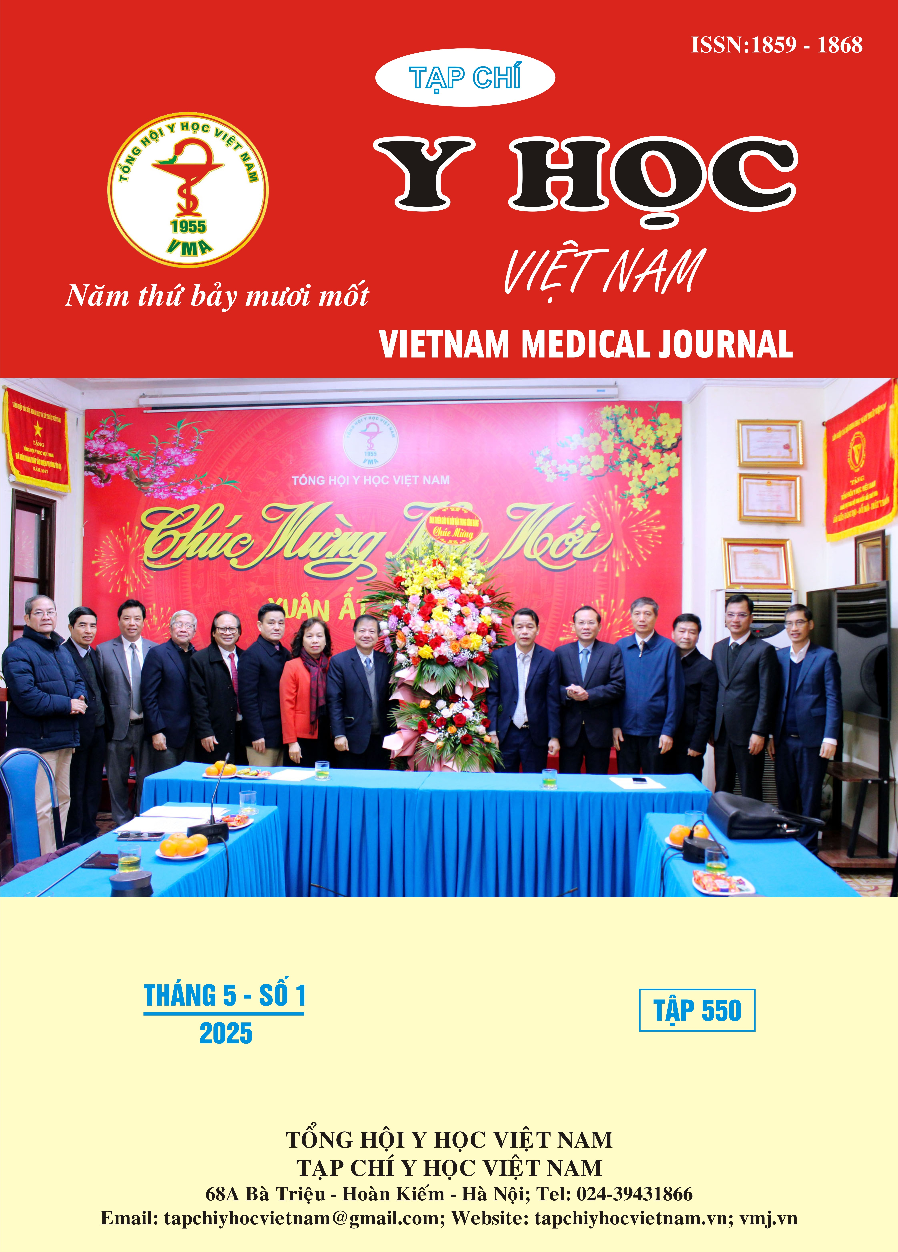INVESTIGATION OF CHARACTERISTICS AND RELATED FACTORS OF DYSLIPIDEMIA IN PATIENTS WITH HIGH AND VERY HIGH CARDIOVASCULAR RISK AT CAN THO UNIVERSITY OF MEDICINE AND PHARMACY HOSPITAL
Main Article Content
Abstract
Objectives: To investigate the characteristics of dyslipidemia and some related factors in patients with high and very high cardiovascular risk. Materials and methods: A cross-sectional descriptive study was conducted on 80 patients with high and very high cardiovascular risk who visited the Outpatient Clinic of Can Tho University of Medicine and Pharmacy Hospital from June 2024 to January 2025. All patients underwent clinical examinations to record risk factors, blood lipid testing, and analysis of related factors. Results: male accounted for 33.8% of the study population, with an average age of 62.36 ± 10.49 years. Among the participants, 70.0% had high cardiovascular risk, and 30.0% had very high cardiovascular risk. Patients with very high cardiovascular risk had a higher prevalence of elevated total cholesterol (58.3% vs. 28.6%) and LDL cholesterol (70.8% vs. 48.2%) compared to those with high cardiovascular risk. The prevalence of elevated LDL cholesterol was significantly higher in patients who smoked (47.7% vs. 2.8%), consumed alcohol (47.7% vs. 0.0%), were overweight or obese (47.7% vs. 22.2%), or had diabetes mellitus (36.4% vs. 13.9%) compared to those without these risk factors. Conclusion: patients with high and very high cardiovascular risk had a high prevalence of dyslipidemia, mainly characterized by elevated total cholesterol and LDL cholesterol. Risk factors such as smoking, alcohol consumption, overweight/obesity, and diabetes mellitus were associated with increased LDL cholesterol levels.
Article Details
Keywords
Cardiovascular risk, dyslipidemia, related factors
References
2. Barquera, et al. Global overview of the epidemiology of atherosclerotic cardiovascular disease. Archives of medical research. 2015. 46(5), p. 328-338.
3. Yusuf S, et al. Cardiovascular risk and events in 17 low, middle and high-income countries. New England Journal of Medicine. 2014. 371(9), p. 818-827.
4. Mahalle, et al. Study of pattern of dyslipidemia and its correlation with cardiovascular risk factors in patients with proven coronary artery disease. Indian journal of endocrinology metabolism. 2014. 18(1), p. 48-55.
5. Stein EA. Managing dyslipidemia in the high-risk patient. The American journal of cardiology. 2002. 89(5), p. 50-57.
6. Mach F, et al. 2019 ESC/EAS Guidelines for the management of dyslipidaemias: lipid modification to reduce cardiovascular risk: the Task Force for the management of dyslipidaemias of the European Society of Cardiology (ESC) and European Atherosclerosis Society (EAS). European heart journal. 2020. 41(1), p. 111-188.
7. Misra A. Revisions of cutoffs of body mass index to define overweight and obesity are needed for the Asian-ethnic groups. International journal of obesity. 2003. 27(11), p. 1294-1296.
8. Đặng Vạn Phước. Khuyến cáo về chẩn đoán và điều trị rối loạn Lipid máu. Hội Tim mạch học Quốc gia Việt Nam. 2015, tr. 9-25.
9. Jebari-Benslaiman S, et al. Pathophysiology of atherosclerosis. International journal of molecular sciences. 2022. 23(6), p. 3346.
10. Plana N, et al. Prevalence of atherogenic dyslipidemia in primary care patients at moderate-very high risk of cardiovascular disease. Cardiovascular risk perception. Clínica e Investigación en Arteriosclerosis. 2014. 26(6), p. 274-284.


